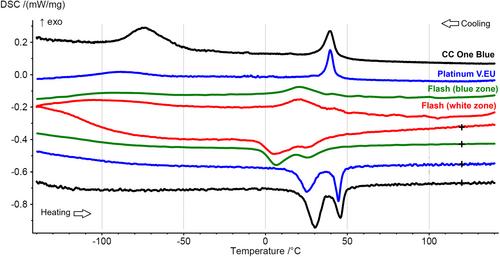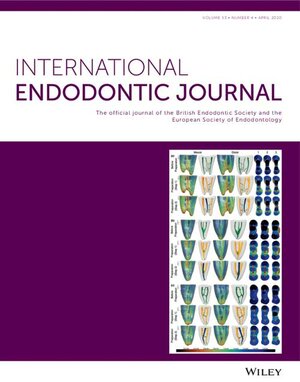The impact of blade geometry (nonflat, flat or hybrid) and metallurgical composition on the mechanical performance of NiTi endodontic instruments: A multimethod laboratory study
Abstract
Aim
To evaluate the influence of blade design (conventional, flat and hybrid) and metallurgical properties on the mechanical performance of nickel-titanium endodontic instruments.
Methodology
Two hundred and seven NiTi instruments (25 mm in length) with three different blade designs were selected for analysis: conventional (n = 69, CC One Blue, size 25/0.08v), flat (n = 69, Platinum V.EU, size 25/0.06) and hybrid (n = 69, Flash Endo Power, size 25/0.06v). The instruments were evaluated regarding geometric design (scanning electron microscopy), alloy elements composition (energy-dispersive X-ray spectroscopy) and phase transformation temperatures (differential scanning calorimetry). Additionally, their mechanical behaviour was investigated by testing cyclic fatigue resistance, torsional resistance, bending resistance, buckling resistance, cutting efficiency and microhardness. Statistical significance was determined using One-Way anova and Kruskal–Wallis tests (α = 5%).
Results
Platinum V.EU and Flash instruments exhibited design inconsistencies within the same lot, including nonstandard positioning and variations in the length of the flat side. All instruments were composed of a nickel-titanium alloy with equiatomic ratios of nickel and titanium. At 20°C, Flash instruments exhibited a mixed R-phase and austenitic arrangement, transitioning fully to austenitic at 36°C, while CC One Blue and Platinum V.EU displayed a complete R-phase at 20°C and retained a mixed R-phase and austenitic arrangement at 36°C. The CC One Blue exhibited superior performance in time to fracture (156 ± 34 s), maximum torque (1.5 N·cm) and buckling strength (372 ± 31 gf) (p < .0001), while no differences were found in maximum rotation angle (p = .602). In terms of flexibility, the Flash (328 gf) and CC One Blue (341 gf) outperformed the Platinum V.EU (376 gf) (p = .006). Flash (121 gf) and CC One Blue (137 gf) also outperformed Platinum V.EU (253 gf) in terms of cutting efficiency (p < .0001). Conversely, the Platinum V.EU demonstrated significantly higher microhardness (386 ± 45 HVN) compared to CC One Blue and Flash (p = .0340).
Conclusions
Overall, instruments featuring either flat-side (Platinum V.EU) or hybrid (Flash) active blades demonstrated inferior mechanical performance compared to the conventional nonflat instrument (CC One Blue).


 求助内容:
求助内容: 应助结果提醒方式:
应助结果提醒方式:


